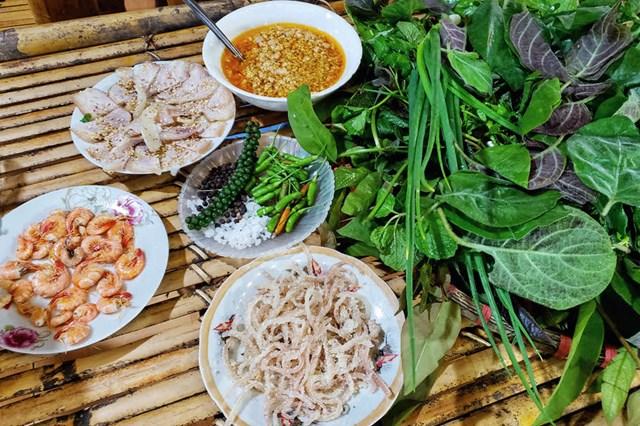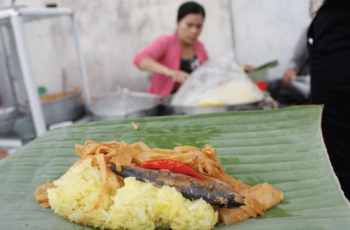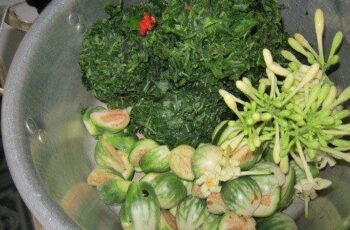Ad Blocker Detected
Our website is made possible by displaying online advertisements to our visitors. Please consider supporting us by disabling your ad blocker.

Kon Tum leaf salad is considered a dish with the boldest Central Highlands flavor. The reason it’s called “leaf salad” is because this dish only has leaves and leaves, shrimp, and meat are the accompanying ingredients to stimulate the taste buds. The first feeling when the restaurant brings out the leaf salad will probably make the first-time eater overwhelmed, because the entire table is covered with a tray or tray of lush green leaves.
Leaf salad is a dish that can be eaten all year round, but there is still a difference in the rainy or dry season, because the amount of leaves depends on the weather and climate. In the dry season, the leaf salad tray is limited to only 30-40 types of forest leaves. In the rainy season, when the trees in the forest are luxuriant, the leaf salad dish has the most variety of accompanying leaves, up to more than 60-70 types.
Later, over time, some rare forest trees had their leaves reduced a lot, but they were still basically divided into three types of leaves. The first type is simple leaves that are easy to find and grow in the home garden such as: mustard greens, perilla, mint, polyscias fruticosa, marjoram, fig leaves, apricot leaves, green onions, pennywort, fish mint, etc. basil… The second type of leaf, although familiar but quite strange on the Vietnamese dinner table, is: guava leaves, mango leaves, gooseberry leaves, pentaphyllum… And finally, it is the forest leaves of the Central Highlands that are used to have To get it, the farmer has to get up and go to the forest very early to collect: brocade leaves, red bamboo leaves, bear bile, bamboo leaves, great compassion, passion fruit, wild tamarind, bamboo shoots, worm huts… along with a series of strange leaves. that only locals know.
While the main ingredient is leaves, preparing side dishes is equally difficult, including many side dishes and different preparation methods. The plate of pork belly must be both lean and fatty, sliced thinly. A plate of golden-roasted ground shrimp, carefully cut off the heads. A plate of pork rinds prepared like spring rolls, thinly sliced and mixed with mushrooms and spices. In addition, there is also a plate of salt with black pepper and green chili to stimulate the taste buds.
The most important and considered the soul of the dish, the thing that helps blend wonderfully between all the forest leaves and shrimp, meat… comes from the bowl of viscous, saffron-colored dipping sauce. It is not fish sauce, soy sauce or ordinary dipping sauce. To process it, it must go through several stages, from sticky rice after being fermented, fermented with dried shrimp, pork belly, and then pureed. Next, put that mixture on the hot pan with fried onions, add batches, satay, spices and stir well on the stove to simmer until done.
Leaf salad does not use rice paper but uses the leaves to wrap everything. First, choose the largest leaf such as a mustard leaf or apricot leaf, roll it into a small funnel in the palm of your hand, then add other smaller leaves depending on your taste preferences. Next, add in a few slices of boiled meat, a few roasted shrimps, a handful of pork skin, and sprinkle with a few grains of salt, pepper, and chili for flavor. Then finally, add a small spoonful of saffron-colored dipping sauce, then you have successfully rolled a leaf salad and can enjoy it.
The leaf salad dish is considered to be full of flavor and delicious, it must ensure the rich taste of meat, shrimp, the spicy taste of pepper, chili, the salty taste of salt, the sour and greasy taste of the dipping sauce… melting into the stick. The sound and coolness of forest leaves.


